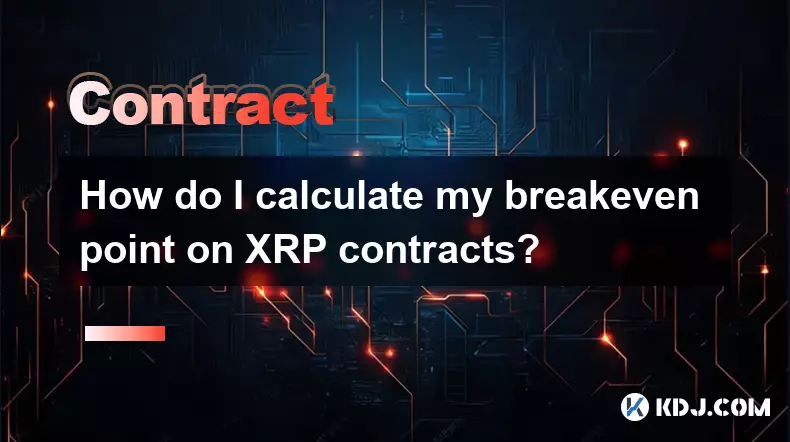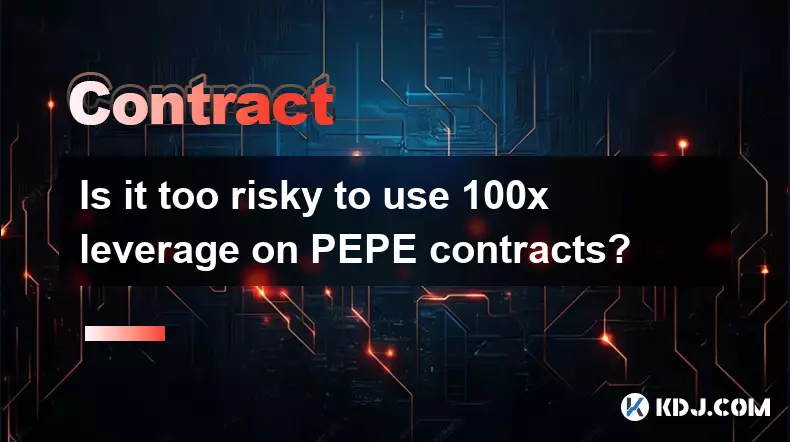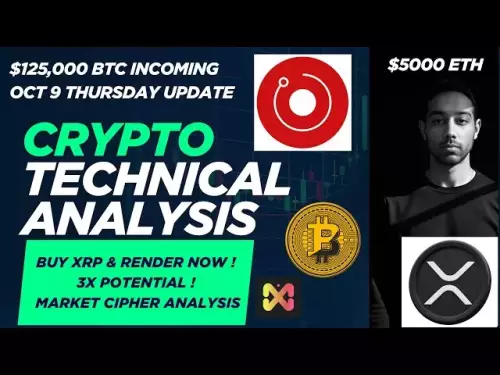-
 bitcoin
bitcoin $122659.385674 USD
0.52% -
 ethereum
ethereum $4484.113342 USD
-0.09% -
 bnb
bnb $1304.229256 USD
-0.85% -
 tether
tether $1.000204 USD
-0.03% -
 xrp
xrp $2.860636 USD
-0.51% -
 solana
solana $227.288799 USD
2.36% -
 usd-coin
usd-coin $0.999805 USD
0.01% -
 dogecoin
dogecoin $0.252837 USD
1.18% -
 tron
tron $0.341149 USD
1.12% -
 cardano
cardano $0.830507 USD
0.33% -
 hyperliquid
hyperliquid $45.792319 USD
0.04% -
 chainlink
chainlink $22.422164 USD
1.55% -
 ethena-usde
ethena-usde $1.000283 USD
0.01% -
 sui
sui $3.511389 USD
0.83% -
 stellar
stellar $0.385276 USD
-0.44%
What are the settlement procedures for XRP contracts?
XRP futures and derivatives are typically cash-settled in stablecoins like USDT, with profits or losses calculated without exchanging actual XRP tokens.
Oct 09, 2025 at 04:01 pm

Understanding XRP Futures and Derivative Contracts
1. XRP derivative contracts are typically offered by cryptocurrency exchanges that support margin trading or futures products. These contracts allow traders to speculate on the future price of XRP without owning the underlying asset. Settlement procedures vary depending on the platform and the type of contract, but most adhere to standardized mechanisms used across digital asset derivatives.
2. The most common form of XRP contracts includes perpetual swaps and quarterly futures. Perpetual contracts do not have an expiration date and are settled continuously through funding rate payments between long and short positions. Quarterly futures, on the other hand, are settled at a predetermined date based on the average index price over a specific time window before expiry.
3. Settlement is generally conducted in either USDT, USDⓈ (stablecoins), or sometimes in the native currency of the exchange. For example, Binance uses BUSD or USDT for settling XRP/USDT perpetuals, while platforms like BitMEX or Bybit follow similar models. The settlement process is automated and executed by smart matching engines once conditions are met.
4. When a contract reaches its settlement time, the final mark price is calculated using a time-weighted average price (TWAP) from major spot exchanges to prevent manipulation. This ensures fairness and reflects the true market value of XRP at the moment of settlement.
5. In cases of forced liquidation due to insufficient margin, the system automatically closes the position and settles the loss using the user’s collateral. Insurance funds or automatic deleveraging systems may come into play if the loss exceeds available margin, redistributing the burden among profitable traders under extreme volatility.
Cash vs. Physical Settlement Models
1. Most XRP contracts use cash settlement rather than physical delivery. This means that no actual XRP tokens change hands. Instead, profits or losses are calculated in fiat or stablecoin equivalents and credited or debited from the trader’s account balance.
2. Cash settlement simplifies operations and avoids complications related to wallet management, blockchain transaction fees, and custody risks. It also allows traders to participate without needing to manage private keys or external wallets.
3. Physical settlement is rare in retail-focused crypto derivatives markets. However, some institutional-grade platforms may offer physically delivered futures where buyers receive actual XRP upon expiry. These are uncommon and usually restricted to regulated environments with compliance checks.
4. On exchanges offering dual settlement types, users must specify their preference during contract selection. Default settings typically favor cash settlement due to higher liquidity and ease of execution.
5. Cash-based settlement dominates the XRP derivatives space, ensuring faster processing and reduced operational overhead for both traders and platforms.
Risk Management and Margin Requirements
1. All XRP contracts require traders to post initial margin before opening a position. This acts as collateral against potential losses and varies based on leverage levels—commonly ranging from 2x to 100x depending on the exchange.
2. Maintenance margin is the minimum equity required to keep a position open. If the account balance falls below this threshold due to adverse price movements, a margin call occurs, prompting the user to deposit more funds or face liquidation.
3. Isolated and cross-margin modes determine how margin is allocated. Isolated mode limits risk to a defined amount per trade, while cross-margin uses the entire account balance as backing, increasing exposure but reducing premature liquidations.
4. Funding rates are applied every 8 hours on perpetual contracts to align the futures price with the spot market. Long position holders pay shorts when the rate is positive, and vice versa. These payments are automatically deducted or added during settlement cycles.
5. Effective risk controls such as dynamic margin adjustments and real-time liquidation engines ensure stability even during high-volatility events in the XRP market.
Post-Settlement Processes and Reporting
1. After settlement, all closed positions are recorded in the user’s transaction history. Details include entry and exit prices, realized PnL, fees, and the settlement timestamp.
2. Exchanges generate settlement receipts accessible via API or dashboard exports. These documents serve as audit trails for tax reporting and personal accounting purposes.
3. Unrealized gains or losses on open positions are recalculated after each settlement event, especially in batch processing scenarios involving multiple expiring contracts.
4. Some platforms distribute settlement summaries via email or push notifications, particularly for large institutional clients or those holding significant open interest.
5. Dispute resolution protocols exist for erroneous settlements, though they are rarely invoked due to transparent and algorithm-driven execution. Support teams can review logs and provide evidence of fair pricing and correct fund allocation.
Frequently Asked Questions
How are XRP futures prices determined before settlement?XRP futures prices are derived from a combination of order book dynamics and the underlying spot index. The index aggregates prices from top exchanges like Kraken, Binance, and Coinbase to compute a fair reference rate, minimizing skew from any single source.
Can I settle an XRP contract early?Most contracts cannot be forcibly settled before expiry unless manually closed by the trader. Closing a position early realizes profit or loss instantly, but it does not constitute formal settlement—it simply exits the trade ahead of schedule.
What happens if an exchange fails during settlement?Reputable platforms maintain redundancy systems and cold storage reserves to handle technical disruptions. In rare outages, settlement is delayed until normal operations resume, with timestamps adjusted accordingly to reflect accurate valuation windows.
Are settlement gains taxable?Yes, realized profits from settled XRP contracts are subject to capital gains tax in most jurisdictions. Traders must report these earnings through proper financial disclosures, often using exported trade histories provided by the exchange.
Disclaimer:info@kdj.com
The information provided is not trading advice. kdj.com does not assume any responsibility for any investments made based on the information provided in this article. Cryptocurrencies are highly volatile and it is highly recommended that you invest with caution after thorough research!
If you believe that the content used on this website infringes your copyright, please contact us immediately (info@kdj.com) and we will delete it promptly.
- Charlie Lee, Litecoin, and Regret: A NY Perspective
- 2025-10-10 00:45:15
- Cryptocurrencies, Bitcoin, & Market Analysis: Navigating the New Financial Landscape
- 2025-10-10 00:45:15
- Algorand, Chainlink, and BlockDAG: Navigating the Crypto Landscape in 2025
- 2025-10-10 00:50:12
- SUI, DOGE, and Digitap Growth: Navigating the Crypto Landscape in Style
- 2025-10-10 01:25:16
- Polymarket's POLY Token: Hype or the Next Big Thing?
- 2025-10-10 00:50:12
- Whitelist, Crypto, Utility: Decoding the Hottest Trends in Web3
- 2025-10-10 00:25:15
Related knowledge

How to calculate the ROI for Ethereum contracts?
Oct 09,2025 at 04:36pm
Understanding Ethereum Contract ROI Basics1. Return on Investment (ROI) for Ethereum contracts begins with tracking the initial capital deployed into ...

How do I calculate my breakeven point on XRP contracts?
Oct 09,2025 at 08:36pm
Understanding the Breakeven Point in XRP Futures TradingCalculating the breakeven point for XRP contracts is essential for traders who engage in futur...

What are the settlement procedures for XRP contracts?
Oct 09,2025 at 04:01pm
Understanding XRP Futures and Derivative Contracts1. XRP derivative contracts are typically offered by cryptocurrency exchanges that support margin tr...

How to reduce trading fees for Bitcoin contracts?
Oct 09,2025 at 02:37pm
Understanding Bitcoin Contract Trading Fees1. Trading fees on Bitcoin contracts are typically charged by exchanges for executing buy and sell orders. ...

Is it too risky to use 100x leverage on PEPE contracts?
Oct 09,2025 at 04:18pm
Understanding 100x Leverage in PEPE Contracts1. Trading PEPE contracts with 100x leverage allows traders to control a much larger position using a sma...

Which exchange offers the lowest fees for XRP contracts?
Oct 10,2025 at 12:54am
Top Exchanges with Competitive XRP Contract Fees1. Binance has established itself as a dominant player in the cryptocurrency derivatives market, offer...

How to calculate the ROI for Ethereum contracts?
Oct 09,2025 at 04:36pm
Understanding Ethereum Contract ROI Basics1. Return on Investment (ROI) for Ethereum contracts begins with tracking the initial capital deployed into ...

How do I calculate my breakeven point on XRP contracts?
Oct 09,2025 at 08:36pm
Understanding the Breakeven Point in XRP Futures TradingCalculating the breakeven point for XRP contracts is essential for traders who engage in futur...

What are the settlement procedures for XRP contracts?
Oct 09,2025 at 04:01pm
Understanding XRP Futures and Derivative Contracts1. XRP derivative contracts are typically offered by cryptocurrency exchanges that support margin tr...

How to reduce trading fees for Bitcoin contracts?
Oct 09,2025 at 02:37pm
Understanding Bitcoin Contract Trading Fees1. Trading fees on Bitcoin contracts are typically charged by exchanges for executing buy and sell orders. ...

Is it too risky to use 100x leverage on PEPE contracts?
Oct 09,2025 at 04:18pm
Understanding 100x Leverage in PEPE Contracts1. Trading PEPE contracts with 100x leverage allows traders to control a much larger position using a sma...

Which exchange offers the lowest fees for XRP contracts?
Oct 10,2025 at 12:54am
Top Exchanges with Competitive XRP Contract Fees1. Binance has established itself as a dominant player in the cryptocurrency derivatives market, offer...
See all articles


























![🚨IS VECHAIN (VET) A DEAD COIN ?? PRICE ANALYSIS [GET READY NOW] 🚨IS VECHAIN (VET) A DEAD COIN ?? PRICE ANALYSIS [GET READY NOW]](/uploads/2025/10/09/cryptocurrencies-news/videos/vechain-vet-dead-coin-price-analysis-ready/68e7b200b067b_image_500_375.webp)















































